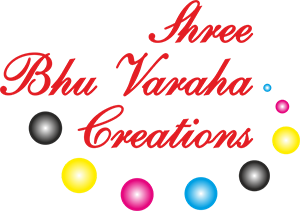Started my career in Screen Printing, where I would help the main printer and remaining time on computers, designing jobs. Learned the art of typing in regional languages. I designed ads for newspapers and other commercial jobs, including multi-color jobs and slide presentations. I also came to know about stall designs for various conferences. Now working as a freelance designer in print media and also support for web designs.
Browse through different types of printing services and their explanation
Bromide Printing
The output is of much higher resolution. The black is darker and is of much more consistent color. The main use of bromides is for proofing documents before printing. Nowadays proofs are made on special proofing printers instead.
Screen Printing
Screen printing is a printing technique that uses a woven mesh to support an ink-blocking stencil to receive a desired image. A fill blade or squeegee is moved across the screen stencil, forcing or pumping ink through the mesh openings to wet the substrate during the squeegee stroke.
It is the process of using a mesh-based stencil to apply ink onto a substrate, whether it be t-shirts, posters, stickers, vinyl, wood, or other material. As the screen rebounds away from the substrate the ink remains on the substrate. It is also known as silkscreen, serigraphy, and serigraph printing. One color is printed at a time, so several screens can be used to produce a multicolored image or design.
Letterpress Printing
It is a technique of relief printing using a printing press. A worker composes and locks movable type into the bed of a press, inks it, and presses the paper against it to transfer the ink from the type which creates an impression on the paper. In practice, Letterpress uses wood engravings, photo-etched zinc “cuts” (plates), and linoleum blocks, which can be used alongside metal types in a single operation.
Offset Printing
The offset press revolutionized the printing industry, making it possible to print enormous quantities efficiently and cost-effectively. The modern offset printing process involves using a computer to create a plate, which is then placed on a cylinder. Ink is applied to the plate cylinder, which rolls against a rubber cylinder, which in turn rolls the ink onto sheets of paper fed through the press. Multi-color printing is done effectively in this type of printing.
Digital Printing
One of the few drawbacks to offset printing is that it’s not economical for low volume, primarily because plates can cost more to produce. That’s insignificant when printing a large quantity of the same items. Digital presses make low-volume printing affordable and have similarly revolutionized the printing industry because they do not require plates. Instead, they use advanced inkjet or laserjet technology to transfer ink to paper.
Foil Stamping
Hot stamping or foil stamping is a printing method of relief printing in which pre-dried ink or foils are transferred to a surface at high temperatures. After 1970, hot stamping became one of the important methods of decoration on the surface of Plastic Products, Invite Cards, Stationery Items, and others…


